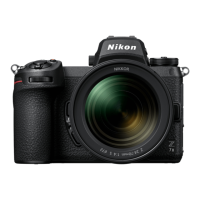Compliance
with
FCC
requirement
15.407(c)
Data transmission
is
always initiated by software, which
is
the passed
down
through
the
MAC,
through
the digital and analog baseband, and
finally
to
the
RF
chip. Several special packets are initiated by
the
MAC.
These are
the
only ways
the
digital baseband
portion
will
turn
on
the
RF
transmitter, which
it
then
turns
off
at the end
of
the
packet. Therefore, the
transmitter
will
be on only while one
of
the aforementioned packets
is
being transmitted.
In
other
words, this device automatically discontinue
transmission in
case
of
either absence
of
information
to
transmit
or
operational failure.
Frequency Tolerance: ±20
ppm
FCC
Radio Frequency Interference
Statement
Note: This
equipment
has
been tested and found
to
comply
with
the
limits for a
Class
B digital device, pursuant
to
part
15
of
the
FCC
Rules
.
These limits are designed
to
provide reasonable protection against
harmful interference in a residential installation. This
equipment
generates,
uses
and can radiate radio frequency energy and,
if
not
installed and used in accordance
with
the
instructions, may cause harmful
interference
to
radio communications. However, there
is
no guarantee
that
interference will
not
occur in a particular installation. If this
equipment
does cause harmful interference
to
radio
or
television
reception, which
can
be determined by
turning
the
equipment
off
and
on,
the
user
is
encouraged
to
try
to
correct
the
interference by one
or
more
of
the
following measures:
• Reorient
or
relocate the receiving antenna.
• Increase the separation between the
equipment
and receiver.
• Connect
the
equipment
into
an
outlet
on a circuit different from
that
to
which the receiver
is
connected.
• Consult
the
dealer
or
an experienced radio/TV technician
for
help.
Co-location
This transmitter must
not
be co-located
or
operated in conjunction with
any
other
antenna
or
transmitter.
Nikon Inc., 1300 Walt Whitman
Road,
Melville, New York 11747-3064,
U.S.A.
Tel.:
631-547-4200
■
Bluetooth
and
Wi-Fi
(Wireless
LAN)
49

